Ed Gorman's Blog, page 85
July 3, 2014
An excerpt from Sarah Weinman's fine piece on Dorothy B. Hughes
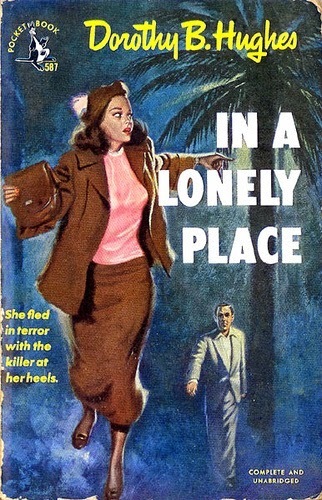
Ed here: Thanks to Jake Hinkson for the reminder
For the entire piece go here:
https://lareviewofbooks.org/review/on...
Dorothy B. Hughes — the B stands for Belle, and Hughes replaced her maiden name, Flanagan, when she married Lewis Hughes in 1932 — is my favorite crime writer. Full stop. I arrived at this conclusion in 2004 with my first reading of In a Lonely Place, her standout post-World War II novel, and have never strayed from it over the course of dozens of rereads. That first read remains an indelible memory, since it came at a time when I was in the midst of an incremental transition from passionate crime fiction fan to professional writer. At 25, I knew what I liked and whose prose spoke to me. I was running a now-defunct blog on the genre, which was something of a water cooler for the community, and was reviewing books for a periodical or two.But In a Lonely Place, which had then been re-released by The Feminist Press, blasted my mind open to new ways of reading. I wasn't only enjoying the story and getting creeped out by the wholly unreliable narrator, Dix Steele, but marveling at the way Hughes let readers in on what was reallyhappening while keeping Dix in the dark about his own nefarious motivations. She was describing the psyche and actions of a serial killer years before the term existed. She depicted the crushing disappointment a war hero feels after coming home to a chorus of crickets, as well as the expectation to pick up where he’d left off — when there’s nothing to pick up. Most marvelously, Hughes turned the whole story on its head by creating strong female characters — from Dix's neighbor and purported love interest, Laurel Gray, to Sylvia, the wife of his best friend (and investigating police detective) Brub Nicolai — and putting moral victory in their hands, through their own actions. This was a feminist book (even if Hughes reportedly poo-poohed the term), written 65 years ago, but the effect was so subtle as to fool people into thinking it was just another crime novel, even an exemplary one.
Published on July 03, 2014 18:00
July 2, 2014
Brash Books Pro-File: Sleeping Dog by Dick Lochte
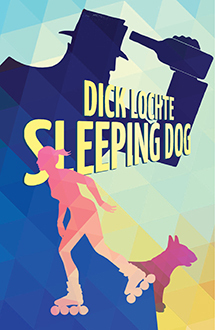
Dick Lochte's terrific, award winning, and incredibly well-reviewed novels SLEEPING DOG and LAUGHING DOG are being republished by Brash Books in September.
1. Tell us about your book / books that Brash is publishing.
Brash is bringing back my first two novels – SLEEPING DOG and LAUGHING DOG. They’re comedy-noir thrillers that team Leo (The Bloodhound) Bloodworth, a hard-drinking middle-aged Los Angeles private eye suffering from hypertension and a low tolerance for precocious teenagers and Serendipity Dahlquist, a bright and strong-willed schoolgirl of fourteen who’s been raised by her actress grandmother. The books are narrated by both Leo and Serendipity. The justification for what was then a fairly unique device was that they each wrote separate accounts of their adventures that a bottom-line publisher insisted be jumbled together. I like to think of it as a mashup of Raymond Chandler and Judy Blume. Humorous, but with some pretty dark elements. SLEEPING won the Nero Wolfe Award and was short-listed for every other crime award that year. The Independent Mystery Booksellers Association named it as one of the 100 Favorite Mysteries of the Century. LAUGHING went into four printings. I should note that of all the covers the books have had in this country and internationally, the Brash editions feature the best I’ve seen.
2. Can you give a sense of what you're working on now?
In the past I’ve focused on one book at a time, but now, because of the digital revolution, I find myself with three projects. I’m preparing an eBook collection of the twelve Leo and Serendipity short stories that I’ve written. I’m working on a novella, tentatively titled WET WORK, that introduces a new character, Quinn O’Connor, the owner of a Marine Construction Company in Florida who’s having a bit of trouble with the members of a homicidal Santeria offshoot. And, most important, probably, I’m about two-thirds into a sequel to the novel BLUES IN THE NIGHT that was nominated last year for the Shamus.
3. What is the greatest pleasure of a writing career?
I guess the greatest pleasure is when you’ve finished proofing that last paragraph of the book. But, that aside, you get a pretty good feeling when the pages it took you a day to grind out still make you smile the morning after.
4. What is the greatest DISpleasure?
It’s the phone call you get from your editor – the one responsible for your three-book contract -- telling you he or she is leaving the publishing house. Your new editor may be even better, but at that moment, even if you don’t tend toward pessimism, you’re not feeling rosy.
5. If you have one piece of advice for the publishing world, what is it?
No question but that publishers are going to have to continue to play nice with Amazon.com. But they should also be much more inventive and helpful in marketing their product to the dwindling independent booksellers who, though in an apparently losing game of Monopoly, are still capable of influencing bestseller lists.
6. Are there two or three forgotten mystery writers you'd like to see in print again?
First up would be Frank Gruber, whose Johnny Fletcher and Sam Cragg novels are like B-movie classics, fast, funny and full of action, with the added element of unique insight into an aspect of Americana, be it California history, comic-strip creation, shoe manufacturing, wedding planning. All treated to Gruber’s breezy style. In any discussion of writers influenced by Dashiell Hammett, Thomas B. Dewey’s novels featuring the PI known as Mac should be near the top. The early ones are the best – hardboiled, lean, beautifully constructed. My third choice would be Howard Browne, whose novels about Chicago PI Paul Pine aren’t just Chandler-like, they read as if Chandler wrote them. Browne used the pseudonym John Evans for the first three, but THE TASTE OF ASHES, the best of the bunch, carries his real name. So does the stand-alone, THIN AIR. In it a weary husband, wife and daughter, on their way home after a car trip stop at a roadside diner. They drive home and the wife suddenly disappears. A neighbor says he’s seen her getting into a cab. Later, she’s found dead. What the heck? The ingenious premise has been used, with credit, in just about every Universal TV mystery series, including Rockford and Simon and Simon.
7. Tell us about selling your first novel. Most writers never forgetthat moment.
Well, the actual selling was something of an anti-climax. I was a columnist for the Book Review section of the L.A. Times. The editor liked to add a biographical line at the bottom of each article. I suggested “Dick Lochte is working on a screenplay.” But Digby Diehl, the editor didn’t like that. “This is a BOOK review,” he said. “Aren’t you working on a book?” I told him I could be, adding, “Make it a mystery,” since that was, and is, my favorite genre. So it went, until about six months later when I received a phone call from Knopf editor Ashbel Green who was in Southern California to meet with his writer Ken Millar (Ross Macdonald). Digby had mentioned my “mystery novel” and he was eager to see it. I explained that the manuscript wasn’t quite ready, but that I would be happy to send it to him as soon as it was. That’s when I started writing SLEEPING DOG. Seven months later, the manuscript was completed and in the hands of a top NYC agent. He sent it to Green at Knopf and . . . Green sent it back, saying it was too talky. I’d barely had time to slump in my chair when the agent was back with an offer from Arbor House. It wasn’t Knopf, but I wound up a published mystery writer, sharing Arbor House’s fall catalog with the likes of Elmore Leonard.
--www.leegoldberg.com
Published on July 02, 2014 09:06
July 1, 2014
Congratulations to Max Collins on his Nero Wolfe Award nomination
From Max's blog http://www.maxallancollins.com/blog/
The other big news is that – surprising the hell out of me – ASK NOT has been nominated for the Nero Award. Check out the full list of nominees here.I am thrilled to pieces for a lot of reasons. First, I felt ASK NOT deserved award recognition and both the Edgars and the Shamuses ignored the final book in the JFK Trilogy. Second, this is one of two awards I really, really want to win (I still crave an Edgar, because…well, because I deserve one after forty-plus years of this).My reasons for wanting a Nero are unique to that award. The major reason, obviously, is that it represents Rex Stout and his great detectives, Nero and Archie, and Stout is on my very short list of favorite mystery writers. (Frankly, I figured the Stout-likeSEDUCTION OF THE INNOCENT might snag a Nero nod, and that ASK NOT would likely get Shamus-nominated. They switched it up on me.)I think there’s a good deal of Archie Goodwin in Nate Heller – who is kind of a mix of Marlowe, Hammer, Spade and the aforementioned – but never expected to have a Heller nominated. Why? Thanks for asking. I’ll tell you, and I’ll tell you also not only why I won’t win, but why it’s a small miracle that I was nominated.The nominees are supposed to be “in the tradition of the Nero Wolfe series.” Here, prominent among the guidelines, is this:Contains no overt sex or violence. Goddamnit, stop laughing!Anyone who has ever read a Nate Heller novel knows why I never expected a Heller to be nominated for a much-coveted (by me) Nero. Anyone who has read ASK NOT knows that there’s plenty of overt sex and no small amount of violence. We had a Barbara Allan ANTIQUES nominated a few years back, and I thought that was my only shot.I’ve always resented that guideline, by the way, because there’s plenty of sex and violence in Stout’s Nero Wolfe stories. Or does the Wolfe Pack think Archie and Lily Rowan spend their overnights playing Parcheesi? As for violence, have they ever read THE GOLDEN SPIDERS or THE BLACK MOUNTAIN? Or any number of others? Pfui.But maybe two or three explicit scenes with Nate Heller boffing a stripper doesn’t qualify as overt sex any more. Times have changed, after all. Maybe smoking cigarettes waiting for a guy you’re asphyxiating isn’t considered all that violent, these days. Hope so.Still, I would love to win that thing, for a very sincere if shallow reason – it’s the most beautiful award out there. A bust of Nero Wolfe!And that’s no flummery.
Published on July 01, 2014 20:52
June 30, 2014
Great New Book from TITAN KOKO TAKES A HOLIDAY
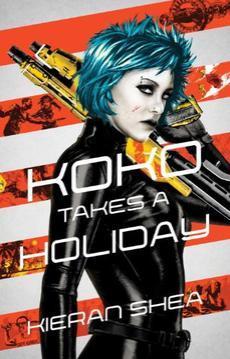
SYNOPSIS
Five hundred years from now, ex-corporate mercenary Koko Martstellar is swaggering through an easy early retirement as a brothel owner on The Sixty Islands, a manufactured tropical resort archipelago known for its sex and simulated violence. Surrounded by slang-drooling boywhores and synthetic komodo dragons, Koko finds the most challenging part of her day might be deciding on her next drink. That is, until her old comrade Portia Delacompte sends a squad of security personnel to murder her.
BOOKLIST starred review
Booklist: Great fun and a fine introduction to an author with a distinctive voice. Expect more from Shea, perhaps in multiple genres. Set five centuries into the future, this debut novel begins in a resort complex called The Sixty Islands, where elite brothel owner Koko Martstellar narrowly escapes an assassination attempt. Fleeing to the orbital community known as the Second Free Zone, Koko is astonished to learn that her old friend, Portia Delacompte, is behind the assassination. And while Koko is trying to figure that out, Portia is trying to figure out something just as baffling: Why did she order the death of her friend (her memories concerning the hired hit seem to have vanished). This futuristic wild ride starts out quickly and doesn’t really slow down until it’s over. You would think such a breakneck pace wouldn’t leave much time for character development, but you’d be wrong; Shea skillfully weaves characterization into dialogue and into the thoughts and actions of the people in the novel. The use of the present tense certainly helps make the story feel urgent and immediate, too: we get caught up in Koko’s predicament and are carried along with her as she desperately tries to keep herself alive until she can track down her would-be assassin.
Published on June 30, 2014 12:17
June 29, 2014
My Granddaughter Shannon leaves for Annapolis tomorrow
My beautiful wonderful Granddaughter Shannon leaves for Annapolis tomorrow. I baby sat her two or three times a week from when she was two and a half to five. She's a remarkable kid. Both the Air Force and the Navy pursued but she opted for the Navy. Her favorite movie when I baby sat her was "The Lady and The Tramp." I know this because we watched it virtually every time she came over. I sure love you, Shannon. Here's a local news story about her. http://www.kcrg.com/sports/local/Wash...
Published on June 29, 2014 19:28
The Real History of Batman by Mark Evanier at News From Me
The Real Dynamic Duo: Kane and FingerPublished Saturday, June 28, 2014 at 3:15 PM
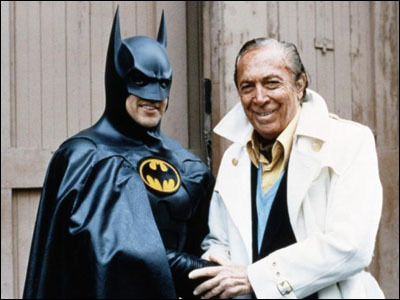
Bob Kane and Friend
Ed here: This piece illustrates why I'm such a loyal reader of Mark Evanier's News From ME.. Check out his bio--he's literally done it all. For the whole piece go here. http://www.newsfromme.com/2014/06/28/...
There is much talk on the Internet about the announcement that some time next year, Bob Kane will receive a star on the Hollywood Walk of Fame. I mentioned it here and joked that protestors would show up for the ceremony with signs that said "WHAT ABOUT BILL FINGER?" Apparently, some folks are talking about actually organizing something of the sort. I'm thinking I may even go out and join them.For those who don't know: Bill Finger wrote the first Batman story and most of the early ones that established key things about the character and his world. He was a friend of Kane's and a very good writer, and while Kane argued with some accounts of exactly what Finger had invented, even Bob had to admit that Bill made a vital contribution to the property.In Kane's 1990 autobiography, he stunned many with the following paragraph. The book, like most of the "Bob Kane" art in the comics, was largely the work of someone else. Still, Bob wanted this in there so it's as good as if he'd typed the words himself…
Now that my long-time friend and collaborator is gone, I must admit that Bill never received the fame and recognition he deserved. He was an unsung hero. I often tell my wife, if I could go back fifteen years, before he died, I would like to say "I'll put your name on it now. You deserve it."But Kane did not do this and I really wish he had. He could have picked up the phone, called Paul Levitz or someone at DC and said, "Look, as long as it doesn't impact how much I'm paid, I'd like to add Bill's name wherever mine appears." If he had, Finger's friends and family would not have to deal with this injustice.
Published on June 29, 2014 09:45
June 28, 2014
Pro-File: Barry Hoffman BLIND VENGEANCE

1. Tell us about your current novel/collection.
BLIND VENGEANCE is the 5th book in a series I began with my first novel HUNGRY EYES. The series follows Shara Farris who faced sexual abuse as a child and in HUNGRY EYES gets her revenge (ten years later, when in her twenties). It was written as a stand-alone novel but my agent at the time suggested I write a sequel for publishers he was pitching the novel to. According to him a series would be a great selling point. It was no simple chore as in HUNGRY EYES Shara is a serial killer (the antagonist). Fortunately, I didn't kill her off in HUNGRY EYES. In the sequel EYES OF PREY I had to turn Shara into the protagonist. She became a bounty hunter. From my research many serial killers don't get their thrill with the kill, but from the hunt. Killing is mainly a means for the killer to avoid capture. When Shara becomes a bounty hunter she retains the thrill of the hunt without having to kill. And while a bounty hunter she also takes on some cases where she is more of a private investigator. As the series progressed additional characters were introduced, some who became Shara's "family" though she wasn't related to any of them. There is also a supernatural forest that comes into play in the second book. It is a living entity that interacts with Shara and others within her sphere of influence. The forest is neither benign nor evil. As a newly created sentient entity it is studying humans like Shara. From book to book it evolves from a child to a teenager in BLIND VENGEANCE. It can and does heal a character in the series, but any good it does always come with a price. In BLIND VENGEANCE for the first time the forest projects a human manifestation so it can interact with humans outside of the forest. The plot of BLIND VENGEANCE revolves around the kidnapping of Renee. Shara is her guardian and Renee has become more important with each book in the series. A psychopath mistakenly kidnaps Renee thinking she is the daughter of Shara's partner (in bounty hunting) Lamar Briggs. Renee is aware she has been mistakenly kidnapped, but must act like Briggs's daughter or be killed. Shara must find Renee before the kidnapper tires of holding her captive.
2. Can you give a sense of what you're working on now?
I'm currently working on a novel that revolves around the human sex trade. It's a sequel to an as yet unpublished novel BLOOD SACRIFICE. The protagonist of BLOOD SACRICE is a homicide detective who was the first openly lesbian graduate of the Philadelphia Police Academy (based loosely on a male who was the first openly gay graduate). In DOUBLE TAKE Detective Thea Hughes believes there is more that meets the eye to a teen runaway who kills another runaway in an altercation. Eyewitnesses all corroborate her story of self-defense but Thea believe the girl was set up to be killed. Shadow, the killer, is involved an the human sex trade, something the reader learns as the novel progresses.
3. What is the greatest pleasure of a writing career?
For me the greatest pleasure is creating believable characters. While the plots of my books are important it is the characters that bring the novel to life. What I really get off on is writing a character who is initially a secondary--even a minor--character who as the novel progresses screams out to me for a larger part. I call this my "wildcard" character and I have one in almost every novel I've written. When I hear the call from that character I listen and that character often plays a pivotal role in the novel. In one novel I've written I enjoyed writing about a secondary character so much that in a sequel that character becomes the main character and the main character from the first book becomes a secondary character in the sequel. There is no greater pleasure than creating a world of your own and that's what I do with each of my novels. I don't even consider it work. It's my passion. In a way a novelist is allowed to play God. There are times I've killed off characters. I never do it for shock value or as a cheap trick. My characters become so ingrained within me that to kill one off is no easy chore. I still kick myself for killing off the antagonist in my second novel BORN BAD. I liked the Shanicha character so much that I wrote a prequel with Shanicha as the main character.
4. What is the greatest DISpleasure?
I don't write "the next big thing" which is what mass market publishers are looking for. I wrote a YA trilogy but it doesn't deal with vampires nor is it a dystopian novel. I find that mass market publishers are looking mainly at the bottom line. I write about what interests me without any thought as to whether a mass market publisher would be interested in what I've conjured up. I also don't like to be confined to any one genre something mass market publisher push so a book can find its place in chain bookstores. My novels are genre-bending. In most of my novels there are elements of suspense, a procedural mystery, a thriller, horror and the supernatural. HUNGRY EYES was categorized as a horror novel which is inaccurate. Yes, it has horrific elements but it is much more that that. The greatest influence in my writing was Richard Matheson. He also never stuck to one genre but wrote was interested him. He was also a minimalist as am I. When I describe a car it's a car. I might give a make or model and a color, but that's about it. I don't spent a lot of time or pages describing an apartment where a crime might take place or the clothes my characters wear. It's getting into my characters minds and motivations that I'm interested in, not what they wear, drive or where they live. My not being easy to categorize has made it difficult for me to be published my mass market publishers.
5. If you have one piece of advice for the publishing world, what is it?
Make a home again for mid-list authors. This swinging for the fence and looking for the next big thing doesn't mean you're going to publish quality novels.
6. Are there two or three forgotten mystery writers you'd like to see
in print again?
I think Edgar Allan Poe's mysteries have been largely relegated into the background due to his phenomenal horror stories. But Poe is considered the father of the modern detective and merits more attention. I also think Richard Matheson's mysteries have been ignored at the expense of his horror novels (I AM LEGEND) his Twilight Zone fantasies and his other genre books like THE SHRINKING MAN. He wrote a number of mysteries that are exceptional. He also wrote five westerns that all but die-hard Matheson fans don't know exist.
7. Tell us about selling your first novel. Most writers never forget
that moment.
I sold HUNGRY EYES to Leisure Books. I was initially thrilled. It's every author's dream to be published. I'd written dozens upon dozens of short stories (which were published) and had even written an aborted novel (unpublished). But when you hear your novel is going to be published it's a phenomenal feeling. Things, though, went downhill from there. The book was labeled "horror" by the publisher, though I didn't see it as a horror novel. Then I got a look at the cover art and had no idea whatsoever what it was (it was a look from atop of a cellar--not even in the book). I thought the purpose of the cover art of a novel was to draw someone browsing through dozens of books towards your novel. With HUNGRY EYES no one would have a clue what the book was about by looking at the cover. And, once published I was told the publisher had no PR department. The book would have to swim or sink on its own. I did local signings but didn't have the money to hire my own publicist. Still, I was a published novelist and just saying those words to myself is an unimaginable feeling.
Published on June 28, 2014 16:56
Nothing Is Impossible by Ed Hoch
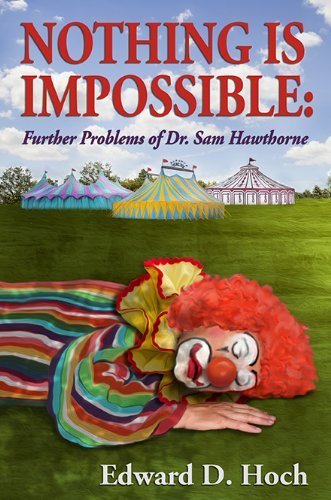
Crippen & Landru has long published one of the most memorable lines of short story collections by past and present mystery writers alike. The covers are always catchy and the introductions easy to read and informative.
In this case, Janet Hutchings, that most excellent editor of Ellery Queen Mystery Magazine, tells us not only about the fifteen "impossible crime" stories awaiting us but also about the amazing Ed Hoch himself.
I've been a full time free lance writer for something over a quarter century and I can tell you first-hand how difficult it is to make a living this way. Lots of ups and down. You have great years financially and you have not so great years (as in thinking of becoming a TV minister). This is the life of a full time writer of novels.
To make a living writing short stories...certainly not even Ed Hoch could make this "impossible" life possible. But he did. He supported himself for decades writing almost nothing but short stories (yes, there were a few novels) and what stories they were.
Not only did he work in every sub-genre of crime fiction; he invented a few sub-genres himself.
I once had the pleasure of editing a collection of his private eye stories. He dazzled at that form just as he dazzled with whodunits, howdunits, whydunits, hard boiled, medium boiled and cozies.
Not to mention locked room and other impossible crimes. The easy comparison is with John Dickson Carr and his "impossible" tales. But great as Carr was he didn't have Ed's range or, believe it or not, ingenuity.
Consider the stories here:
Dr. Sam Hawthorne, a New England country doctor in the first half of the twentieth century, was constantly faced by murders in locked rooms and impossible disappearances. Nothing Is Impossible contains fifteen of Dr. Sams most extraordinary cases solved between 1932 and 1936, including a circus acrobat who vanishes from a trapeze; an invisible weapon; murder in a cabin surrounded by unmarked snow; murder in a locked house surrounded by an electrified fence; the attack on a ventriloquist's dummy; a haunted teepee; the vanishing of a teenage girl from her blue bicycle; and eight other ingenious problems for Dr. Sam. I've been reading these as my bedtime stories and they're perfect. They take you to a world that isn't but ought to be--the world of those great old radio shows and those great old B movies. Ed Hoch could do it all and this fine collection proves it.
Published on June 28, 2014 07:15
June 27, 2014
"The Leopard Man" Pulp Serenade Cullen Gallagher
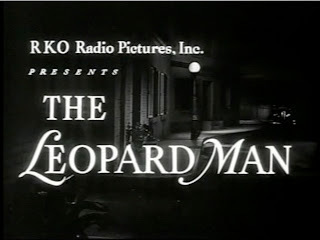
Go here to see trailer:
http://www.pulpserenade.com/2009/03/m...
From Pulp Serenade by Cullen Gallagher:
Darkness has never been darker than through the eyes of Jacques Tourneur. It is more than just an absence of light: it is an all-consuming abyss. A vacuum of blackness. Often only a single ray of light will penetrate the shots, but instead of providing an escape it only emphasizes the totality of darkness. There is no escape, only nothingness.
The third and final collaboration between the shadow-puppeteer Tourneur and producer Val Lewton, The Leopard Man (1943) is an adaptation of Cornell Woolrich’s The Black Alibi. Much like Tourneur and Lewton’s earlier films Cat People (1942) and I Walked With a Zombie (1943), mystery and horror fuse together in an unholy noir nightmare. In this film, Dennis O’Keefe plays a talent manager who cooks up a publicity stunt for client Jean Brooks involving a leopard. But after the stunt goes foul and the leopard escapes, mangled bodies start turning up in alleyways, all bearing the same claw marks. Guilt-stricken over the terror he has unleashed, O’Keefe is determined to track down the killer – and uncover whether it really is a leopard or a man responsible for the deaths.
Sixty-six years later, The Leopard Man is still a highly effective thriller. Tourneur and Lewton’s iconic minimalist approach to suspense is not only infallible, but also undeniably creepy. When a character steps out into the street at night, the absolute lack of light and near-silent soundtrack combine to create an atmosphere of chilling unknowingness. While many have copied this approach over the decades, no one has done it more effectively than these two innovators. Their scenes are so stark that the slightest sound, or faintest light, scars the senses. Consumed by silence and shadow, we are left with only our imaginations to create the horrors of the night, thus forcing us to create our own worst nightmares.
Below are a few shots that are characteristic of Tourneur and Lewton’s iconic style, as well as the film’s original theatrical trailer.
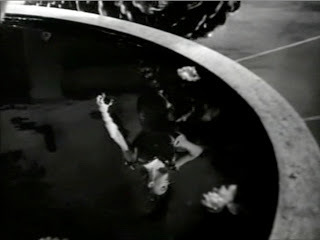


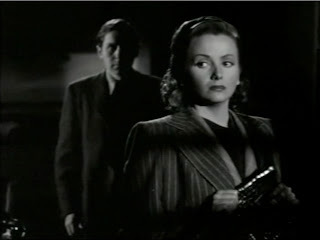
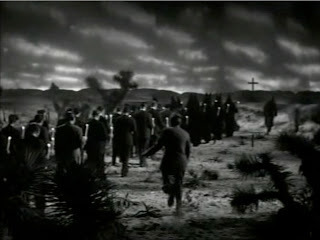
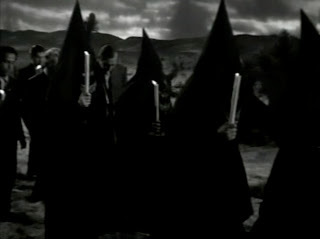
Published on June 27, 2014 17:27
June 26, 2014
A “New” Writer Reflects by Max Allan Collins
A “New” Writer ReflectsJune 24th, 2014 by Max Allan Collins
reprinted from http://www.maxallancollins.com/blog/ max collins
As I write this, SUPREME JUSTICE has hit 548 reviews and maintains a four-star average. This is a testament to Amazon’s marketing ability, and has taught this old dog some new things, if not tricks.
I continue to be surprised by the confidence of readers who are quite sure that I’m imitating writers who I’ve never read. Any number have scolded me for trying to do Jack Reacher, and are particularly annoyed that my character Reeder’s name is so similar.
Those of you who have followed these updates for a while know that I am notoriously unfamiliar with the work of other suspense/mystery writers of my time. I am strictly a Hammett/Chandler/Cain/Spillane guy. The last hardcover mystery I bought and read was the final 87th Precinct novel. My idea of a new mystery writer is Donald E. Westlake.
I did the original synopsis of SUPREME JUSTICE – and this pre-dates Matt Clemens’ involvement – seven years ago. I’d never heard of Jack Reacher, and frankly my first familiarity with the character was the Tom Cruise movie – I obviously go to a lot of those. Reeder’s name had nothing to do with Reacher. I’ve never read Tom Clancy either, though I’ve seen most of the Jack Ryan movies.
But Amazon reviewers are confident in this case, and many others, that I’m doing Lee Child or Clancy or Grisham or Sandford or any number of writers I’ve never read. By the way, I mean no insult to them or any writer. I have stated here numerous times that (a) my reading time is largely taken up by research, and (b) I am a natural mimic and avoid reading other suspense fiction for that reason.
There’s another reason, and it goes something like this…other people’s mystery novels fall into one of three categories: worse than me, about the same as me, better than me. Why would I want to read something worse than my stuff? Why should I bother reading something that I could write myself just as well? As for those better than me, well, screw them!
Yes, I’m kidding, sort of, and I do occasionally read contemporary crime fiction, as when I’m on an Edgar or Shamus committee, or when one of my writer friends has something out. Thankfully my writer friends are very good – people like Ed Gorman, Steve Mertz, Bob Goldsborough, Bill Crider, Bob Randisi, John Lutz, and half a dozen more.
And I know that a lot of writers continue to read voraciously in their own fields, so this is probably a weakness on my part. But I mention this chiefly to make the point that if I’m setting out to work in another writer’s wheelhouse, it’s more likely to be Mickey Spillane or Rex Stout than John Grisham or Lee Child.
But there’s something else odd – and frankly disturbing, and certainly humbling – that turns up in a good number of these Amazon reader reviews. A lot of these readers think I’m a “new” writer; a fair amount of ‘em go out of their way to say they’ve never heard of me.
I realize I’m not John Grisham or Lee Child, but while I have not read either of those very popular writers, I am aware of their existence. As someone who spends plenty of time wandering in bookstores, and studying the section where my work is shelved, I have a strong awareness (without reading them) of scores of writers in my genre. I read Mystery Scene, Crimespree, The Strand, Deadly Pleasures, always read the review column in EQMM, and attend Bouchercons frequently. So I know who my contemporaries are.
Yet these mystery fans, writing Amazon reviews…some of them, anyway…haven’t noticed I’m alive during this forty-year career of mine. Haven’t noticed my byline on ROAD TO PERDITION or CSI or the Spillane collaborations or…anything. It’s as if they know only the authors whose names they’ve encountered in airport gift shops.
So when I see SUPREME JUSTICE with 500-plus Amazon reviews, and, for example, KING OF THE WEEDS sitting at 21 reviews, I am as disappointed about the latter as I am thrilled about the former.
And sadly convinced that marketing is king.
Here I thought it was writing. What a schmuck!
* * *
Published on June 26, 2014 13:39
Ed Gorman's Blog
- Ed Gorman's profile
- 118 followers
Ed Gorman isn't a Goodreads Author
(yet),
but they
do have a blog,
so here are some recent posts imported from
their feed.



